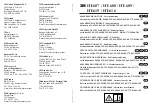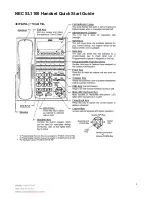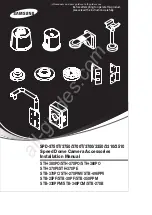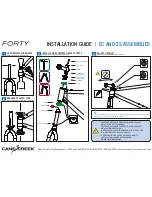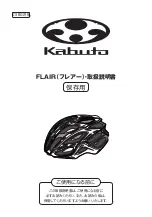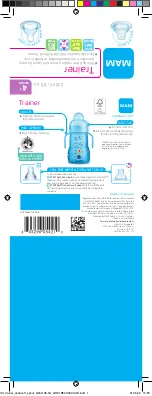
C h e m i s t r y M u l t i M e a s u r e S e n s o r
Sp e c if ic a t i o n s
8
012-09523B
Appendix A: PASCO Capstone Calibration
In PASCO Capstone, click the Hardware Setup icon in the tools palette to open the Hardware Setup panel. Confirm that the
icon of the sensor appears with the icon of the interface being used. Click the Hardware Setup icon again to close the panel.
Click the Calibration icon (
) in the Tools palette to open the Calibration panel. For a two-point calibration, you will need
two “known standards,” such as two buffer solutions of known pH or two liquids of known temperature, such as ice water and
hot water. For temperature calibration, a standard thermometer will also be needed.
1.
The first step in the Calibration panel is to choose the type of mea-
surement you would like to calibrate. The default for the Chemistry
sensor is “Temperature”. The other choice on the menu is “pH”.
Click “Next”.
2.
In the second step, the temperature probe is automatically selected (if
the default measurement is kept). Move to the third step.
3.
The third step in the panel is to choose the type of calibration. “Two
Standards (2 point)” is the default. Click “Next”.
4.
The fourth step in the panel is to calibrate the first point. The “Stan-
dard Value” shows 0.00 °C. (This Standard Value can be changed if
necessary. Highlight the “Standard Value” and enter a new value if
needed). For this example, put the temperature probe into a “known
standard” of ice water. Click “Set Current Value to Standard Value”
and then click “Next”.
5.
The fifth step in the panel is to calibrate the second point. The “Stan-
dard Value” shows 100 °C. For this example, put the temperature
probe into a “known standard” of hot water along with the thermom-
eter. Highlight the “Standard Value” and enter the temperature from
the thermometer. Click “Set Current Value to Standard Value” and
then click “Next”.
6.
The sixth step in the panel is to review and accept the calibration
information. Click “Back” to return to a previous step. Otherwise,
click “Finish”. The first step in the panel appears again. Follow the
same procedure to calibrate for another type of measurement.
7.
Click the Calibration icon in the Tools palette to close the Calibration
panel.













